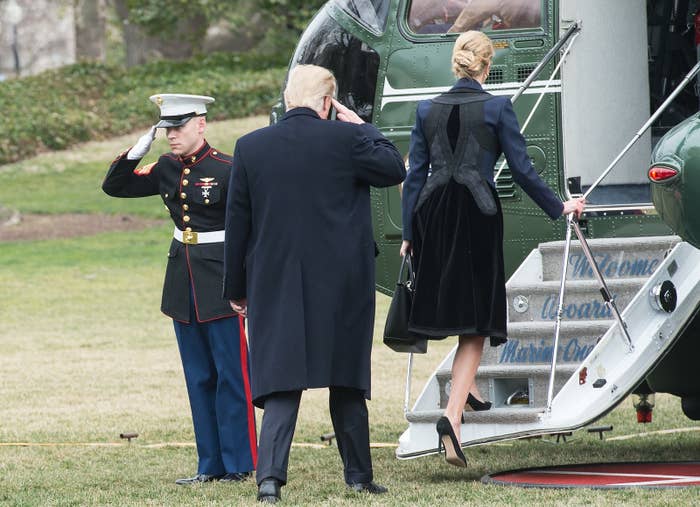
WASHINGTON — When it comes to the US raid in Yemen targeting a suspected al Qaeda headquarters, there are two versions of events — what happened and what you’ve heard. And with each passing day, hopes of closing that gap appear to be diminishing, military officials concede.
The covert Jan. 29 raid has become a political minefield, the first test of the Trump administration’s national security mettle and, behind the scenes, a discussion of the fate of an 8-year-old girl.
Reports that the raid killed several children, including Nour al-Awlaki, have become a microcosm of the challenge of determining precisely what happened when members of SEAL Team 6 stormed a group of houses only to be pinned down by what the Pentagon says were local fighters, including women, in a 50-minute firefight.
The death of the daughter of Anwar al-Awlaki, a dual US–Yemen citizen who became a radical cleric and al-Qaeda leader and was killed in a US drone strike in 2011, has been widely reported as fact, but US military officials are not so sure.
In the hours after the raid, local witnesses, including medical personnel, said civilians had been killed, including children. The US military said at the time that it had no evidence of dead civilians and that any women killed were fighters. In its initial statement hours after the raid, the US military said it had killed 14 al-Qaeda militants.
But later that day, Nasser al-Awlaki, a former Yemeni minister of agriculture, said in a Facebook post that his granddaughter, Nour, had been fatally “hit with a bullet in her neck and suffered for two hours.” He later told reporters that she was visiting her mother at the time of the raid and that he had received photos of her dead body from relatives.
The Facebook post was reminiscent of 2013, when Nasser al-Awlaki wrote about the death of his 16-year grandson — Nour’s brother Abdulrahman, a US citizen — in a drone strike.
Several Yemeni activists then tweeted a photo of what appeared to be a dead girl, and identified her as Nour. In the photo, a girl is lying on the floor and wearing a black headscarf around her head and neck. But it is hard to say for sure it is her.
US military officials were befuddled. They scoured the intelligence, including chatter, but had no conclusive evidence that the child of a top al-Qaeda operative had been killed — or that she was still alive, two defense officials told BuzzFeed News. Four days after the raid, the US military said in a statement that it had "concluded regrettably that civilian non-combatants were likely killed.” The military did not name Nour among the civilians.
Despite that, US officials braced for al-Qaeda to feature Nour’s death in their propaganda. But the terror group did not formally martyr the child. And US officials have yet to see evidence of a funeral for her, raising further questions.
“Why did we not see a public funeral?” a third military official asked.
And now the chatter is clouded with people talking about the child’s death and funerals for others killed during the raid, a US military official told BuzzFeed News. But are al-Qaeda militants talking about what they know or what they heard? Those military officials tasked with finding conclusive evidence of the child’s fate are not sure.
“We are still assessing those but can’t say conclusively,” a US Central Command official told BuzzFeed News.
As investigators scour chatter and photos from nearby helicopters, questions about the raid would not go away. How had the SEALs been pinned down? Was President Donald Trump to blame for the problems in this raid? And what effect will it have on future operations against al-Qaeda in the Arab Peninsula, which many believe is the region’s most potent terror group?
Raids by special operations forces are intended to be in the dark, and US officials have so far resisted offering more public details about the raid, saying spelling out what happened could reveal tactics that would undermine future raids.
That the raid has become more about politics than tactics has made some in the Pentagon even more reticent to talk about the raid for fear that facts and lessons from this mission would be exploited by those seeking to score political points.
After Sen. John McCain said he believed the raid was a failure, White House press secretary Sean Spicer said Wednesday that anyone who suggested that the raid was anything but a success was dishonoring the life of Chief Petty Officer William “Ryan” Owens, the 36-year-old SEAL killed during the operation.
Last week, Spicer hesitated using the word "success," saying it was hard to assign such a word to a mission that ended in a troop member’s death; six others were wounded. By Wednesday, he had come around to the term, referring to the raid as a “huge success.”
Both the Pentagon and CENTCOM, which is charge of the Middle East, have never used the word “success” to describe the raid. Military officials said it is not their job to make such judgments. Moreover, some find it hard to call something that led to the death of a Navy SEAL on his 12th deployment, six others injured, and the destruction of a tilt-rotor MV-22 Osprey aircraft a success.
During his briefing Wednesday, Spicer said that because of the intelligence gathered from the raid, “American lives will be saved.” But military officials now believe they may never know for sure what happened to the life of at least one civilian, Nour.
“We don’t know. We may never know,” one military official said.
